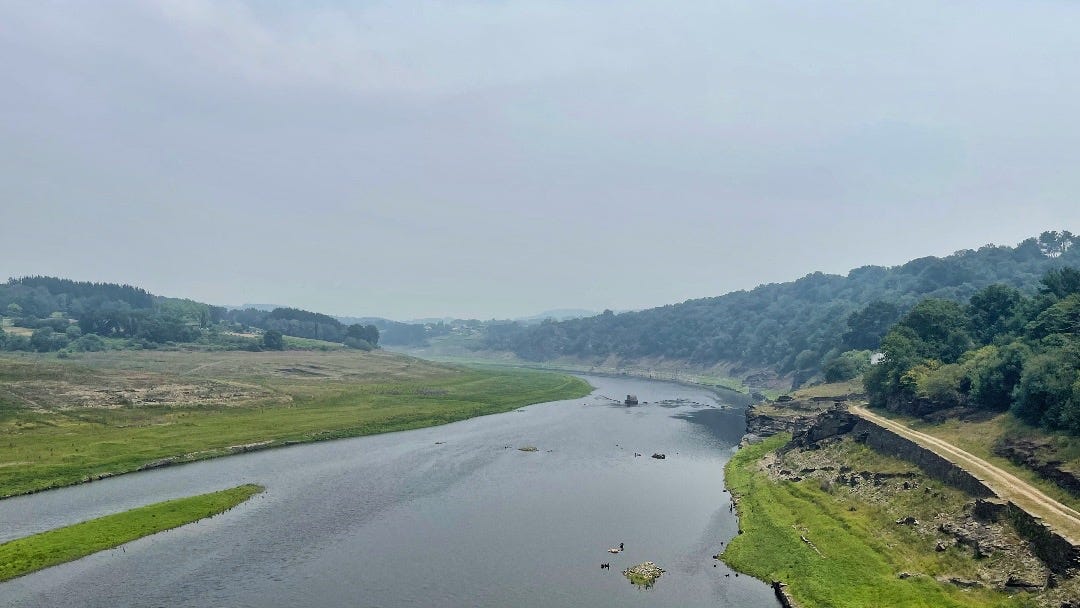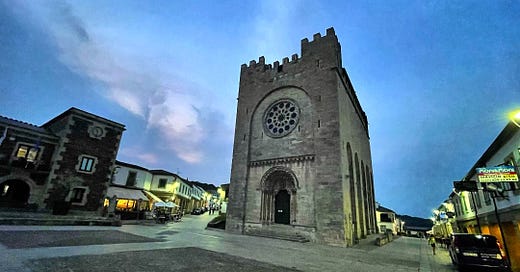
Thousands of people will join World Water Week in Stockholm this week. It's the world's most important annual water event, and its importance will only grow in the years to come.
Water is a bit like climate change; until recently, it was mainly the experts who worried about too much or too little fresh water, especially for the near future. Meanwhile, those living in the global south who have already experienced water and drought extremes didn't get the attention they needed in the media or international politics to solve their problems.

When I spoke about climate change and freshwater challenges some fifteen, ten, or even just five years ago, I used my speaking ventures to convince the audience that climate change is real. So I used graphs with steep lines and colors changing from a friendly blue to an alarming red. Then I would usually add some slides of far-away countries where people experienced the harsh effects of the changing climate. For instance, multi-annual periods of drought. And no lecture was complete without warning the audience that our region's environment was also changing, which would become more noticeable soon.
All that has changed in the past few years. Heatwaves, forest fires, and other extreme weather events awakened an ignorant but developed part of the world. Those who still don't see that our climate is worsening must be either blind or brainwashed. And although the climate is only one of the causes, it's easy to observe and deduce that this catastrophe goes hand in hand with increasing freshwater crises worldwide. A UN report has warned that droughts have become longer and more frequent since 2000. Again, the report mentions climate change as the major factor.
This summer, I experienced heatwaves and forest fires that I wrote about in this newsletter (for instance, here and here). But I also experienced firsthand the importance of water while hiking for days on the hot, dry, flat, and seemingly endless pilgrimage route on the part of the Camino that is known as the Meseta. I often carried an additional two-and-a-half liters of water in my seven-kilo backpack, and I observed on several occasions how other hikers literally became sick due to the walking conditions this summer.

The Meseta was described to me by other pilgrims as a desert, but although crossing this region may feel like walking in the desert, all of it is farmland. A welcome sight was the irrigation channels; every crossing of a small bridge during this hot summer reminded me that water means life. The rapid change towards hotter and dryer summers raises challenges for the farmers in this region. They also deal with water usage restrictions and environmental regulations while producing crops for an increasingly globalized market. The Spanish National Irrigation Plan helps the farmers deal with these challenges by building a new financial system and strengthening the relationship between different levels of government and the agricultural community.
I had already been walking for a month when I arrived in Portomarin in mid-July. I spent the night in the new city, constructed in the 1960s when the Miño River was dammed to create the Belesar reservoir. It is one of the more than 500 reservoirs built during the Franco dictatorship. Some of the town's most historic buildings were moved brick by brick and reconstructed in the new city, including its castle-style main church, the Church of San Juan of Portomarín.

Looking down from the modern bridge, I noted that the water level was low enough to reveal some of the remains of the old town's ancient buildings. The Belesar reservoir is currently functioning at only 39 percent of its total capacity. Therefore, the submerged city of old Portomarín is now exposed, and visitors, including a few people that lived there nearly a lifetime ago, can now visit the village's houses.

The year 2022 may well go into history as the driest year in Europe in more than 500 years. But unfortunately, that will be a short-lived history since it is likely that this record will be broken again in the near future. It was the extreme drought of 2018 that is now considered to be the worst in more than five hundred years. It looks like (the year is not over yet) that it took just four years to break the 2018 record drought.
The Po River in Italy is two meters lower than usual, and you can cross the Loire River in France on foot. Many barges on the Rhine can no longer transport their goods at such low water levels, and some vessels can't even sail along the river anymore when empty.
And it is not much better elsewhere in the world. China has experienced the hottest and driest summer since it began maintaining records of temperature and rainfall data in 1961. Low water at hydroelectric dams has led to the rationing of power. The Chinese state media say that the government will try to protect the autumn harvest by using chemicals to generate rain.
More than 70 percent of the U.S. has been experiencing extreme or severe drought conditions, and the main reservoirs in the Colorado basin are at historically low water levels. And while that has led to the discovery of human remains in Lake Mead, the global drought problems have led to all kinds of other finds in Europe.

In the Po River in Italy, unexploded ordnance and a sunken German barge from WWII have been found. Further south, in Rome's Tiber River, an ancient bridge emerged from the time of Emperor Nero. And the reappearance of the 'Spanish Stonehenge' in what's left of the Valdecanas reservoir is even older. These 7000-year-old stone circles were rediscovered in 1926 but drowned, just like Portomarin in Galicia, in the 1960s during Franco's building spree of reservoirs.
History warns us about the future
All over the Northern Hemisphere, the planet warns us that business as usual is not an option when our greenhouse gas emissions turn up the global thermostat. As so often, history warns us about the future. All over Europe, 'hunger stones' resurface from the depths of the water. These stones at the waterline of rivers symbolize previous droughts and are warnings for future generations. In the Elbe River, a stone that surfaced in 1616 is now out of the water. Our predecessors of the early 17th century wrote to us: "If you see me, cry."
You can become a supporter of this newsletter by subscribing here:
Or you can support my work via Buy me a coffee:
And there are always some more buttons for you, like giving someone a gift subscription (so much better than that bottle of wine and flowers):
Subscribers are the only readers that can leave a comment:
And if you skipped all of those buttons, than you may want to share the article with friends:
Notes:
https://naijaonpoint.com.ng/scientific-trips-spains-sunken-cities-that-emerge-with-the-drought/
https://www.researchgate.net/publication/293809547_The_Spanish_National_Irrigation_Plan
https://english.aawsat.com/home/article/3830051/china-extends-power-rationing-factories-drought






💧🌻🌏🌍
Thank you, Alexander, for bringing the importance of the water dilemma.
I hope we the peoples can learn to be (happy) preppers in time. One of the 'must learn skills', is to be proactively prepared, which, by the way, I think can be a very costly $$$ lesson. The average person has about 3000lbs of belongings. In my case, I'm responsible for about 1000lbs., the size of a horse. Can you imagine toting that around?
Survivalism is a social movement of individuals or groups who proactively prepare for emergencies, including natural disasters, as well as disruptions to social, political, or economic order. Wikipedia
https://en.wikipedia.org/wiki/Survivalism - note under Contents 1.8 - 2020
I have already been very frugal with water for a long time, and somewhat prepared for fire
I’m stunned that one can cross the Loire River by foot. Dumbfounded. Simply mindboggling.
It’s so disappointing and disturbing that so many people continue to deny we’re living in a worldwide climate crisis.
Are you back to your familiar daily routines pre-pilgrimage? Have you returned to see your little furrend?